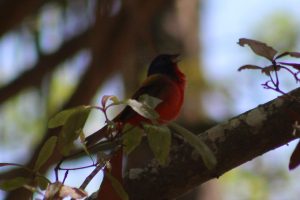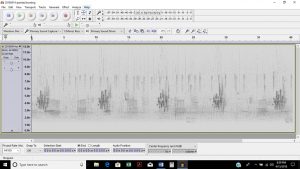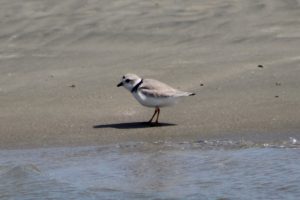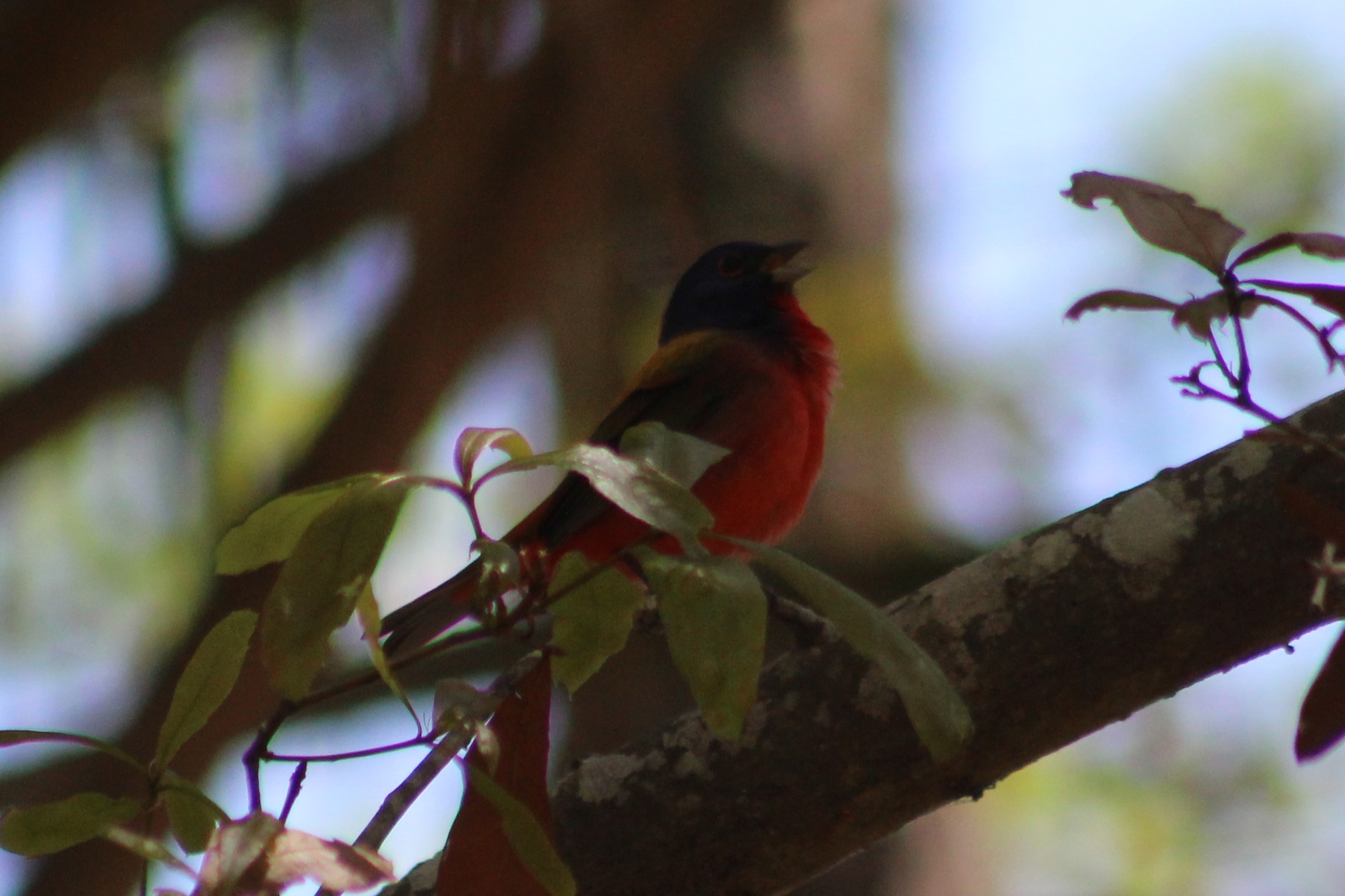The return of the painted buntings to Seabrook Island last week also marks our impending return to Pennsylvania. It is hard to leave such a stunning clown-colored bird, especially when it sings throughout the day just off our deck.

The male dressed in a rainbow of colors sings an incessantly and relatively consistent soft warble. (Click on sound below to hear our neighborhood painted bunting) This species is rarely seen in Pennsylvania. Here in coastal South Carolina, a few stay throughout the winter, but most migrate, not far, just into Florida. Then around the second week of April they return to the excitement of the local birders.

Painted Bunting
Since January, Eileen and I have called Seabrook Island, SC home; if just for three months. We arrived just after the freak snowstorm. We spent days watching northern birds that spend just the winters here; birds like American robins, yellow-bellied sapsucker, ruby-crowned kinglets, hermit thrush, palm warbler and hooded-mergansers—most of which are gone now. We enjoyed seeing the forsythia, then the redbuds and then the azalea’s bloom. During the last few weeks of our stay, we have watched the flowers fade, the trees turn green and many new species of birds arrive.
Just the other day, we went to a natural area and listened recent arrivals like Swainson’s and hooded warblers, white-eyed, yellow-throated and red-eyed vireo, and summer tanager. A few days earlier, a pair of orchard orioles (the first of the season) entertained me. The great crested flycatcher wheeps in the tree by the house, the laughing gulls chortle at us,
Great Crested Flycatcher
Laughing Gull
chimney swifts chatter over Charleston, the barn swallow course of the marshes and fields, and the shorebirds like the piping

plover stage on the beach. All signs of a migration in full swing. Undoubtedly, the birds we see here now nest here. As others of their species fly up from the south, those on territory will push the new arrivals further north. The steady stream of migrants gradually coming into to Pennsylvania (most by mid-May) and many continuing on into Canada.
It is our turn to migrate north where we know that the spring ephemerals so sparse here in South Carolina have started to bloom. We time our arrival back home to see the redbud flower and the azalea bloom. We anticipate the migration of warblers not often seen or heard in coastal South Carolina. As the days grow hot in South Carolina, we return to yet another spring. It is time to say goodbye to the painted bunting and hello to our friends at home.


We are sad to see you both leave and hope you’ll be back to Seabrook Island next year for even longer! Enjoy your time back home!
One of our disappointments was not getting out with you more often. Maybe next year!
Thanks so much for this rich post. Thanks, too, for the reminder of how everything is related. Your photo of the Painted Bunting is a beautiful sight.
Thank you for the way you are enriching my life by sharing yours.
I’ve missed you and can’t wait for you to come to your northern home again. The spring bulbs are doing their thing in your yard so you better get a move on…….
xoxo
Mercy
I’m glad you had a lovely stay in South Carolina. The painted buntings haven’t quite returned to Texas yet – we are looking and listening for them every day. Wishing you both a great summer!
I’ve missed you and can’t wait for you to come to your northern home again. The spring bulbs are doing their thing in your yard so you better get a move on…….
xoxo
Mercy
Thanks for sharing your insight on the birds of South Carolina. I learned so much from you. Enjoy PA and come back soon. You don’t have to wait until winter.